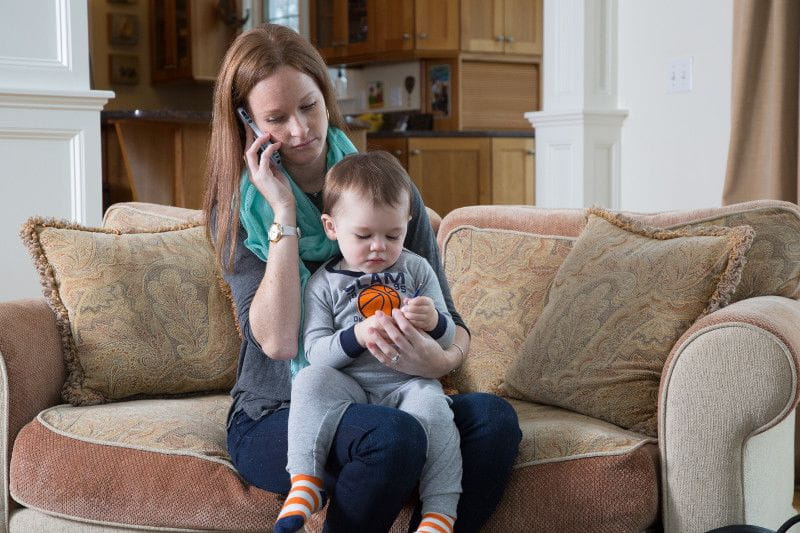You’re an employee mindful of racial inequity and aware of the impact of privilege.
You want to support your Black colleagues and be a genuine ally for change.
But as an employee who is not Black, you wonder, what does being an ally really mean? Even as many outside the Black community are willing, they’re often unsure about what to do. How do they support their colleagues of color? What are real actions they can take? How can they meaningfully participate as true allies?
We posed those questions to Bright Horizons Diversity, Equity & Inclusion Director Deborah Harris and Field Director Melony Gibson – both integral members of our Black Resources for Inclusion, Diversity, and Equity (BRIDGE). Here’s what they had to say to 10 questions would-be allies often ask.
What is a true ally exactly?
An ally in this sense is someone who supports and speaks up for disenfranchised and underrepresented (or historically unrepresented) groups of minorities within our country and workspaces.
Why is my role as an ally so important?
We need allies to use their voices and privilege to help raise visibility and create opportunities for marginalized groups. They can help foster genuine inclusive practices and a work environment where every person feels psychological safety and that their contributions are valued. When you include colleagues and show genuine interest in their experiences and expertise, you can minimize feelings of isolation, which can ultimately impact a sense of belonging.
How do I start to become a good ally?
We’d suggest going to an Employee Advisory Group meeting. Our BRIDGE not only welcomes people of color, but all who will step forward. Attending these meetings helps everyone understand the Black experience, and to grow as true allies.
Is listening enough?
It’s a start.
How do I turn my desire into practice?
A lot of people think action is always about big, sweeping policies. But really, it starts with the courage to act – even in small ways – day to day. Address inappropriate jokes, comments, or statements with friends, family, and colleagues; be firm about the fact that all people should be treated with dignity and respect; and be the person who notices and invites, when no one else does.
My company has expressly stated Diversity, Equity, and Inclusion goals and policies. Doesn’t that mean we’re paying attention?
You have to look below the surface and be really open to where inequities may be hiding. For leaders, using available data such as survey feedback, hiring, retention, and turnover numbers can be eye-opening. It’s important information that can inform decisions and practices in the workplace. Such information can be extremely revealing in positive cultures that have robust DEI programs. These offerings can often keep people from seeing where inequality hides; they can even make you think it’s not there. But as a colleague wrote once, happy cultures don’t immunize against racism, they can actually conceal it.
Can you give me an example?
A white, female colleague in a leadership role recently talked about her reaction to her company’s well-intended hiring practices. The HR efforts were in earnest, but they still reflected a white dominant culture. She’s actively speaking up on that; putting a spotlight on it; suggesting ways to ensure candidates of color are being seen. That’s how you move the dial; by asking questions; seeing where micro-aggressions exist; and taking that information back to teams and colleagues so those people see where the problems are. Those are real, actionable things people can do.
What if I’m not in a leadership role. Can I really make a difference?
Everyone can make a difference. Employees on frontlines can stand up for each other and fight the everyday micro-aggressions that occur in what appear to be subtle jokes, memes, comments, etc. They can bring examples to leadership. They can engage in honest, authentic, transparent communication with their teams/supervisors when they feel they are missing the mark, and they can advocate for safe spaces to speak up for a more equitable and equal workspace. Supervisors can ensure that DEI is woven into organizational operations – that we’re walking the talk. They can make sure DEI initiatives discussed at team meetings are actively practiced. And we all have the job of making sure we’re keeping our eye on accountability, which includes saying something when we see problems. Everyone is at a different place on this journey, so it has to be a partnership with collective responsibility and commitment.
Fear of saying the wrong thing is keeping me from acting. How can I get comfortable with this?
Discomfort is ok. To make progress, we have to get comfortable with the uncomfortable. Discomfort is better than doing nothing. Because inactivity and/or indifference is complicit to inequity.
What’s one element of allyship that I might not think about?
Biases exist in some of the least expected places – namely, ourselves. So it’s important to be introspective; to question your own biases and then make the effort to address any ingrained beliefs that perpetuate inequity.
A FINAL NOTE from Deborah and Melony: The above amounts to the basics. Allyship in practice is being always open, finding your own places to make change, and pushing back when you know in your heart that something is wrong.
It’s ongoing work and it’s a job that’s never done. But by being willing to stand shoulder to shoulder with diverse colleagues and lending your voice, Melony and Deborah told us, you’ll be able to meaningfully make a difference.





